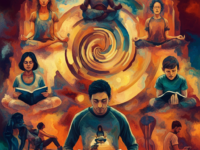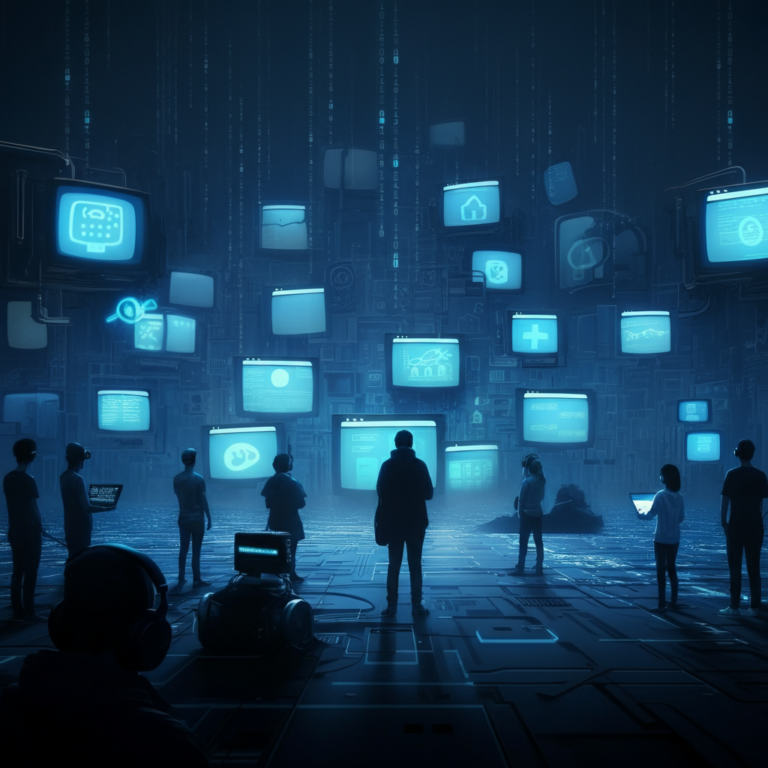The internet, often romanticized as an endless reservoir of human interaction and content, has always felt alive—a dynamic ecosystem teeming with ideas, discussions, and connectivity. But what if that perception is flawed? Enter the “Dead Internet Theory,” a provocative concept that questions the very nature of the web as we know it. If you’re an internet user, tech enthusiast, or content creator, understanding this theory might change how you perceive and use the digital world.
This blog will explore what the Dead Internet Theory entails, its evidence and criticisms, its impacts on culture and society, and how individuals and businesses can adapt to evolving internet dynamics. Finally, we’ll look at the counterarguments and what the future of the internet may hold according to experts.
What Is the Dead Internet Theory?
Coined on internet forums in the late 2010s, the “Dead Internet Theory” posits that the majority of online content is not generated by humans but rather by algorithms, bots, and automated systems controlled by powerful corporations or governments. Proponents argue that the internet has shifted from being an organic space of authentic interactions to a manufactured environment dominated by fake or automated content.
At its core, the theory suggests that somewhere between 2016 and 2017, the internet “died.” During this period, the argument goes, the online activity stopped reflecting genuine human discourse and began resembling a scripted, automated system optimized for engagement and profit rather than authenticity.
On platforms like Reddit, YouTube, and even blogs, discussions around this theory have gained traction, sparking debates about what is real and what might be artificially generated in the digital age.
Evidence and Arguments Supporting the Theory
While the Dead Internet Theory gathers scepticism from many, its proponents provide reasoning and anecdotal evidence to consider.
1. The Proliferation of Bots
A key argument revolves around bots. Reports have shown that bots already account for over 40% of all web traffic, and on platforms like Twitter, studies suggest 15–20% of users could be bots. These automated programs generate tweets, content, and engagement that appear human-like but are entirely artificial.
2. Declining Quality of Content
Supporters of the theory argue that the internet is littered with repetitive, low-value content designed merely to keep users scrolling. Clickbait headlines, algorithm-generated articles, AI-written blog posts, and comment farming contribute to this decline in quality.
3. Controlled Algorithms
Algorithms on platforms like Facebook, YouTube, and Instagram dictate what users see, prioritizing engagement metrics such as likes, shares, and watch time. Critics argue that these algorithms suppress authentic, grassroots content in favour of predictable, advertiser-friendly posts.
4. Consolidation of Power
The internet’s early days were characterized by decentralization, with countless independently run sites and forums. Today, a handful of corporations—Google, Meta, Amazon—control significant portions of digital traffic, leading some to believe the web has been monopolized and sanitized for profit.
The combination of these factors fuels the argument that much of what appears to be “real” online is a construct designed to influence and manipulate users.
How the Dead Internet Theory Shapes Internet Culture and Society
If the theory holds any merit, the ripple effect on internet culture and society is undeniable. Authentic communication has always been the internet’s promise. But what happens when we question the human origins of the content we’re absorbing?
Loss of Trust in Digital Interactions
Users have grown increasingly sceptical of the authenticity of comments, followers, and even reviews online. This growing distrust may lead individuals to rely less on online information and seek out more analogue or verified formats.
Amplification of Polarization
Fake or exaggerated digital engagement encourages echo chambers, swaying opinions and spreading misinformation faster than authentic discourse might allow. This polarization has deepened divides across political and social lines globally.
Content as Commodity, Not Art
The prioritization of engagement over authenticity means that content is increasingly viewed as a commodity. Content creation is often driven by metrics rather than innovation, leading to a homogenization of ideas and less creativity online.
Adapting to Shifting Internet Dynamics
Whether or not you subscribe to the Dead Internet Theory, the digital ecosystem is undoubtedly changing. Content creators and businesses must adapt to survive and thrive in this landscape.
1. Prioritize Authenticity
Consumers value genuine experiences and connections. Whether you’re a YouTuber, writer, or business owner, producing original, high-quality content that resonates personally will stand out in a sea of automation.
2. Leverage Human Creativity
While automation tools like AI are helpful, ensuring a human touch in your work is crucial. Personalized content, storytelling, and emotion-driven approaches resonate more with audiences and build trust.
3. Engage Meaningfully
Don’t just chase likes and shares—foster real connections. Reply to comments thoughtfully, engage in genuine conversations with your audience, and build community over metrics.
4. Diversify Platforms
Don’t over-rely on any single platform. Algorithmic shifts can drastically impact visibility overnight. Having a presence across multiple platforms helps reduce the reliance on platforms controlled by powerful algorithms.
Counterarguments and the Future of the Internet
Critics of the Dead Internet Theory argue that it veers heavily into conspiracy territory. Here’s why many experts find it unconvincing:
1. Human Input Is Still Unmatched
Despite the growing prevalence of bots, the vast majority of content comes from human creators. Bots may increase traffic, but platforms like YouTube still heavily depend on individual creators to produce engaging material.
2. Democratized Content Creation
Far from being sterile, the internet today allows content creation to flourish at scale. Platforms like TikTok enable untapped global talent to reach unprecedented audiences.
3. New Technologies for Verification
Emerging tools like blockchain and decentralized technology aim to create more transparent systems for verifying authenticity online, paving the way for a more trust-based web.
Industry leaders like Tim Berners-Lee, often hailed as the father of the internet, envision a more open and ethical online landscape, often referred to as “Web 3.0.” This evolution promises users greater control over content and data, ushering in an age of increased authenticity and trust.
Reflecting on the Lessons of the Dead Internet Theory
Whether perceived as a conspiracy or a cautionary tale, the Dead Internet Theory raises meaningful questions about the future of our digital interactions. How do we ensure authenticity in an environment driven by algorithms? How do we balance automation with the human instinct for meaningful connection?
For tech enthusiasts, content creators, and businesses, the answer lies in awareness, adaptability, and staying committed to quality, creativity, and ethical practices. The internet is still very much alive—it’s just evolving, and we must evolve with it to thrive, not merely survive.





















0 Comments